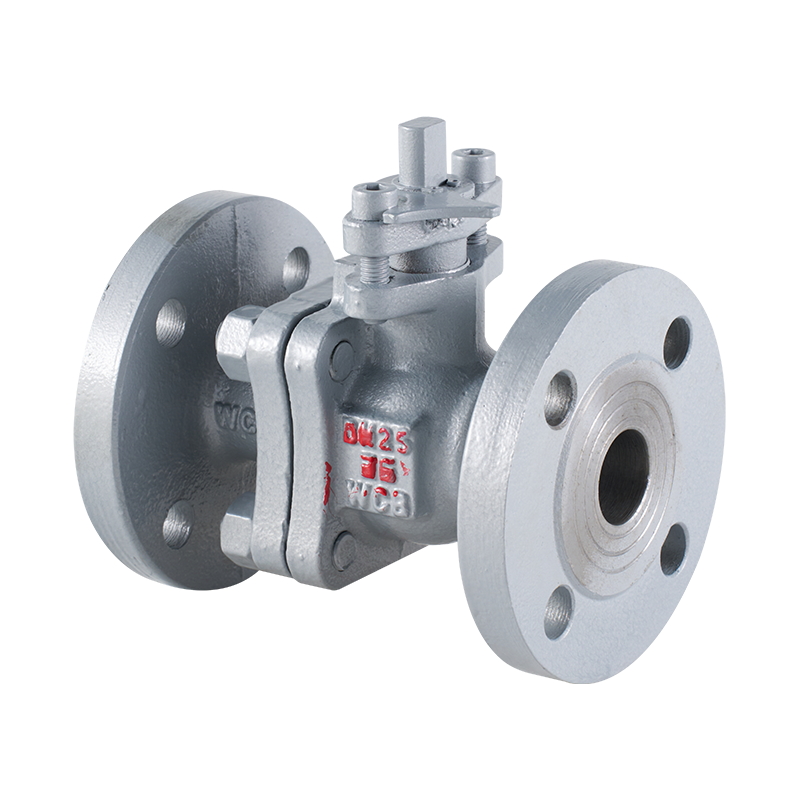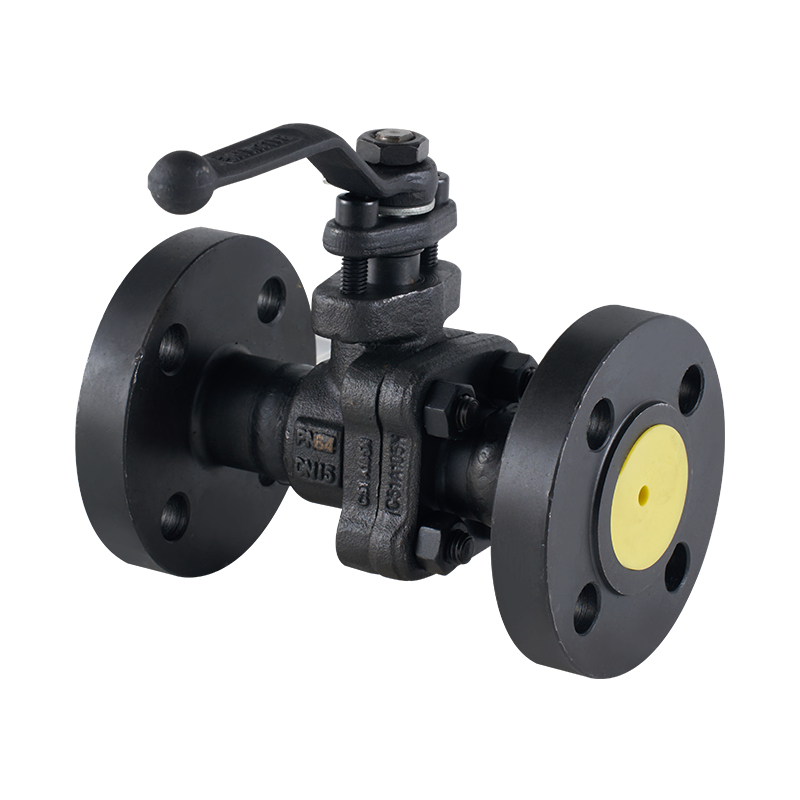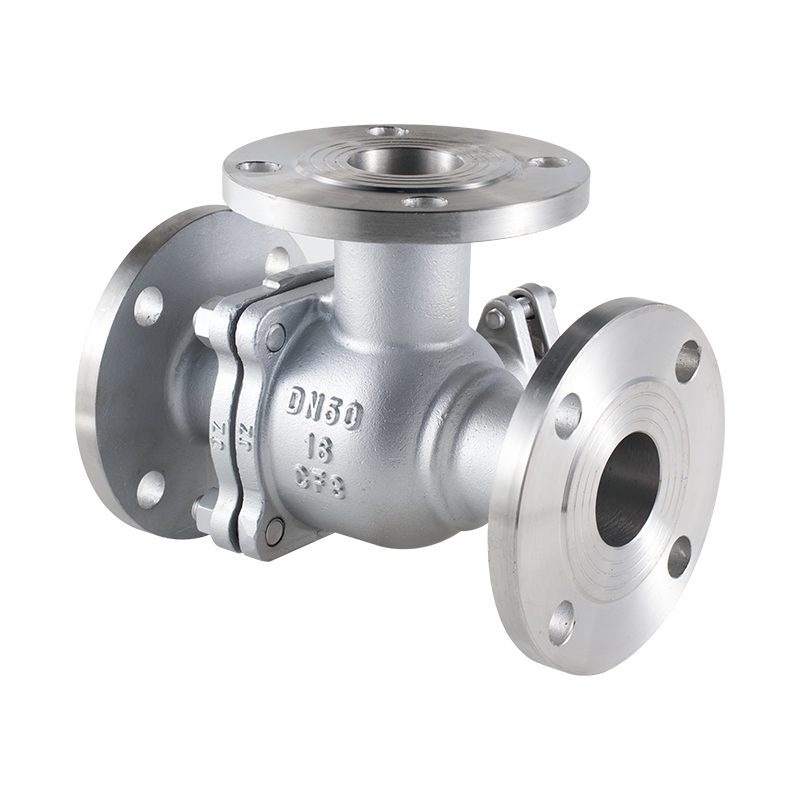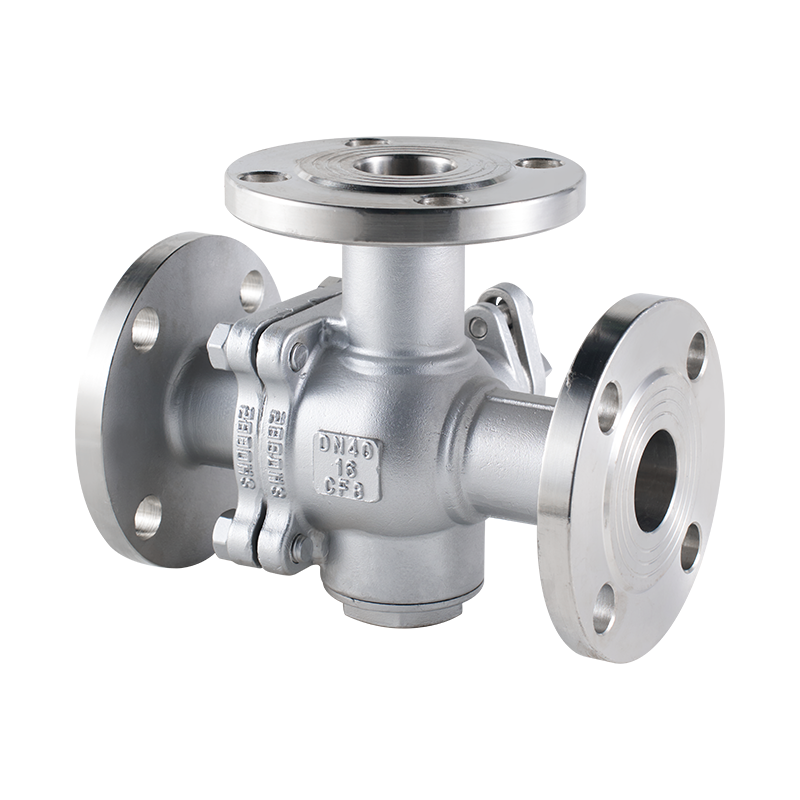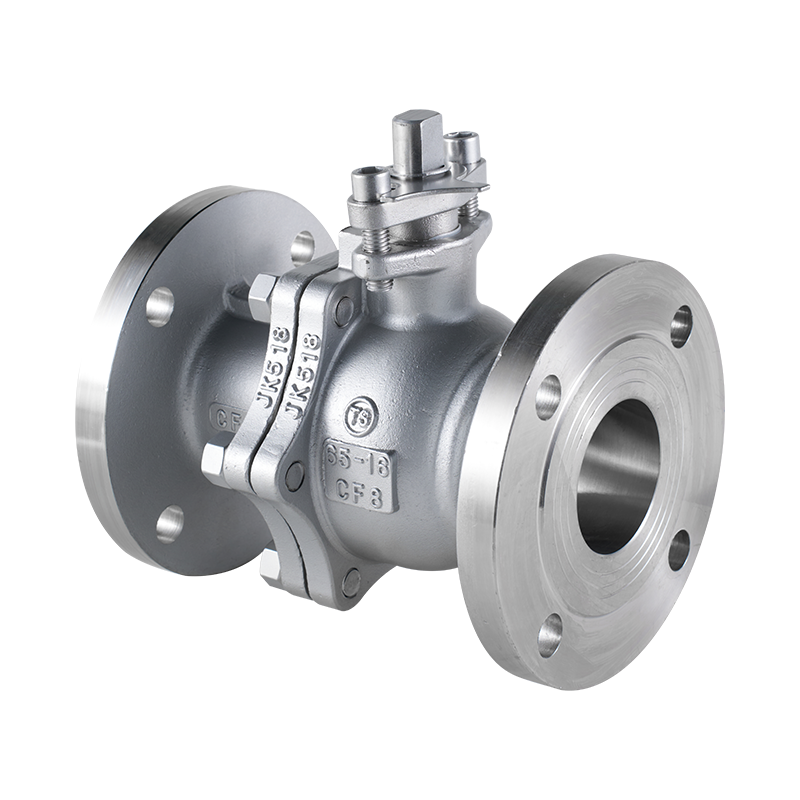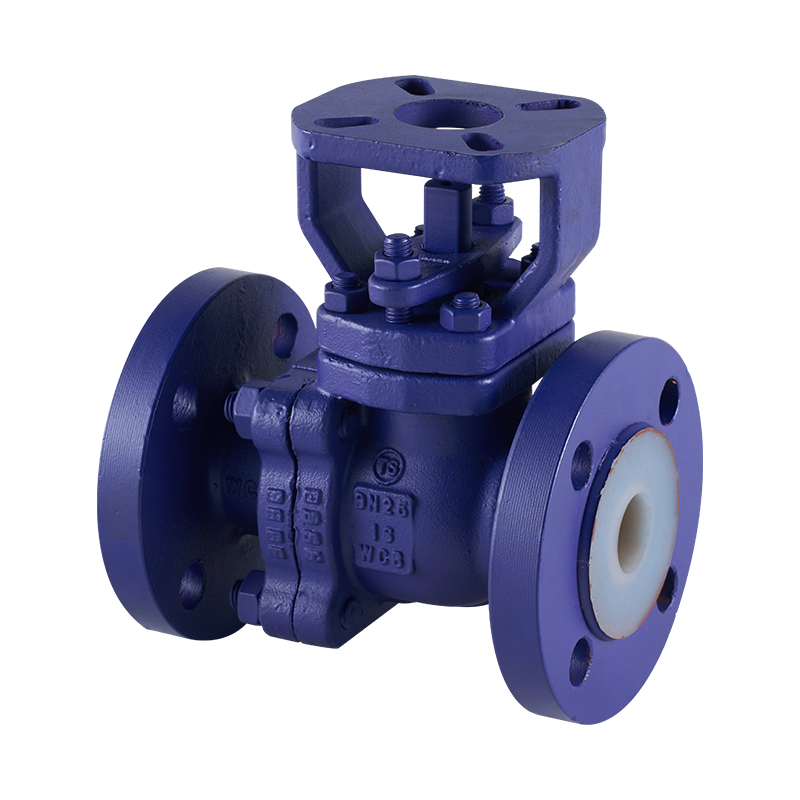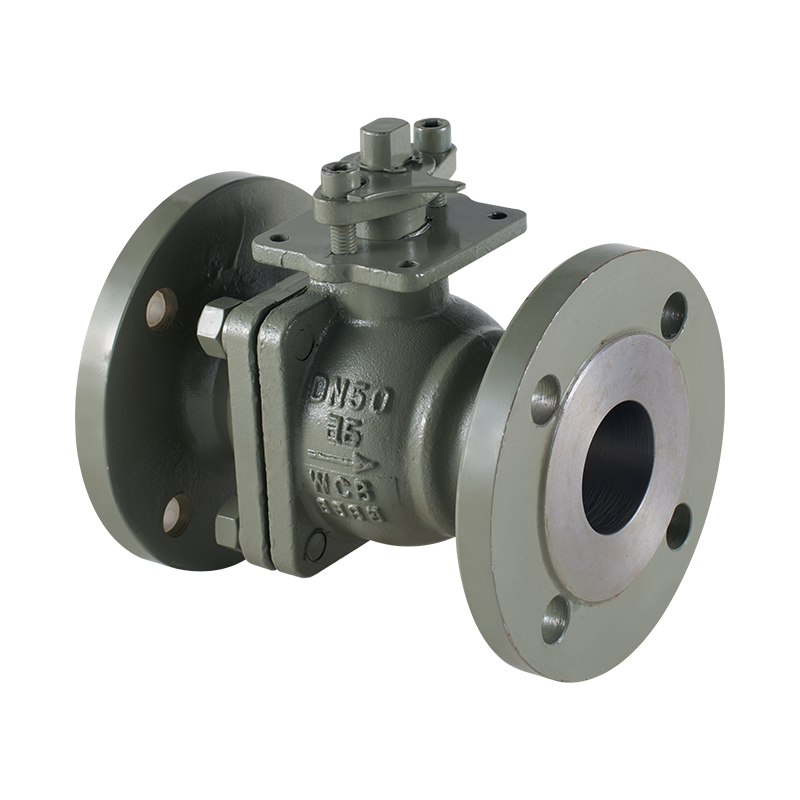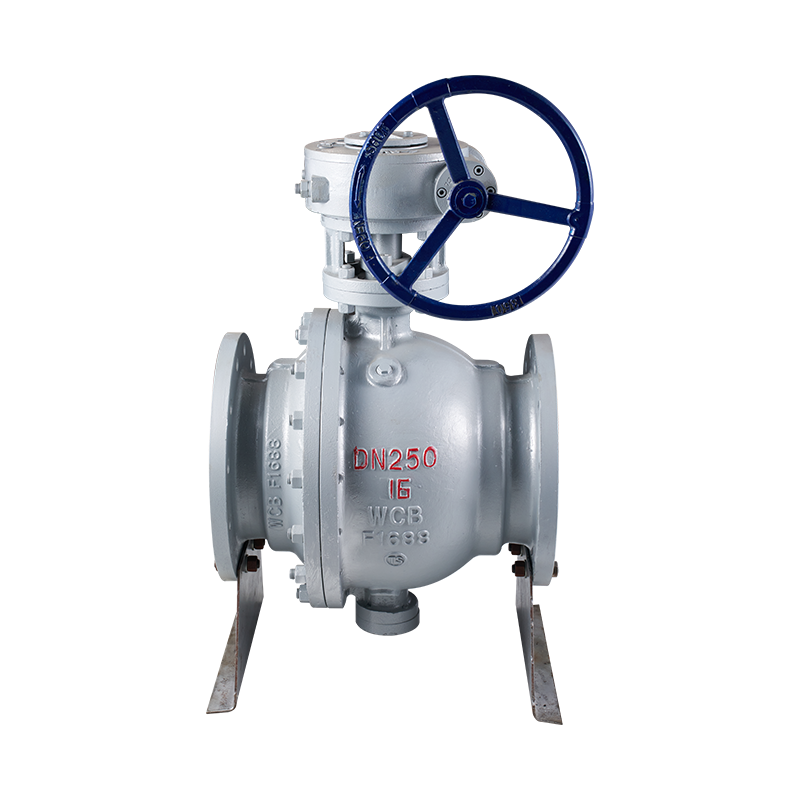The T type cast steel ball valve is an essential component in many complex pipeline systems, particularly where flow diversion or mixing of different process streams is required. Its structure is purposefully designed to support multi-directional flow control while maintaining reliable sealing and mechanical stability.
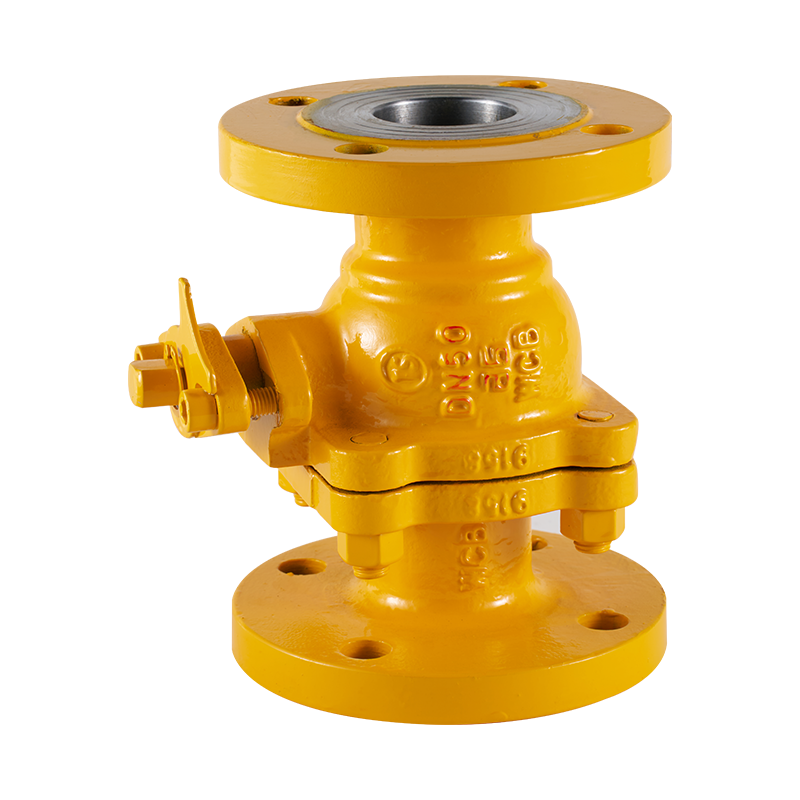
At the core of the T type ball valve is a spherical ball with a T-shaped bore, which is machined to precise tolerances. This T-shaped passage allows the valve to connect three ports—typically configured as one inlet and two outlets or vice versa. Depending on the position of the ball, the valve can direct flow from one port to another or allow simultaneous flow through all three ports, offering great operational flexibility.
The valve body is generally constructed from cast steel, such as ASTM A216 WCB, chosen for its high mechanical strength and ability to perform under elevated pressure and temperature conditions. The flanged ends are designed for secure installation within large-diameter or high-pressure pipelines, providing easy access for maintenance and replacement.
Internally, the ball is supported by seats made of soft materials like PTFE or reinforced polymers, which provide tight sealing even under varying pressure conditions. The stem, which connects the actuator or handle to the ball, is equipped with packing rings and anti-blowout features to ensure operational safety and long-term reliability.
The structure of the T type cast steel ball valve is engineered for durability, versatility, and ease of maintenance, making it a preferred choice for industrial sectors that require complex flow management, such as chemical processing, oil and gas, and power generation.
The heavy duty ball float valve is a vital device used for level control in tanks and reservoirs, where it automatically regulates the flow of liquid to maintain a desired level without manual intervention. Its design reflects the need for durability, reliability, and long service life, especially in demanding environments.
A key element of the valve is the float, typically a hollow or solid ball made of stainless steel or durable plastic, depending on the application. This ball is connected to a lever arm, which, through mechanical linkage, operates the valve mechanism. As the liquid level rises or falls, the float moves accordingly, triggering the valve to open or close as needed.
The valve body is constructed from robust materials, such as cast iron, bronze, or stainless steel, to withstand mechanical stresses and resist corrosion over prolonged use. In heavy duty designs, additional structural reinforcements and thicker wall sections are employed to handle higher flow rates and pressures typically found in large-scale industrial applications, such as municipal waterworks, agricultural irrigation, and industrial water storage systems.
Inside the valve, the sealing components—usually elastomeric seals or metal-to-metal contact surfaces—are designed to provide reliable shutoff even after thousands of operating cycles. The choice of seal materials takes into account the nature of the fluid, temperature variations, and potential abrasive particles in the liquid.
Furthermore, many heavy duty ball float valves are designed for easy maintenance. Features such as flanged connections, replaceable seals, and serviceable internal components allow for quick inspections and repairs, downtime.
The design of the heavy duty ball float valve prioritizes mechanical strength, operational reliability, and serviceability. Its ability to provide automatic, accurate level control in tough environments makes it indispensable for managing water and fluid resources across a wide range of industrial and municipal applications.

 English
English 中文简体
中文简体


